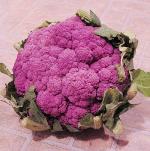PLANT breeders have made cauliflower growing easier for today’s home vegetable gardener but it pays to choose the variety you grow carefully.
In warmer parts of New Zealand, those free from heavy winter frosts, you can sow and plant some varieties year round. In colder areas you can still plant out storebought seedlings as long as you can meet their winter growing needs.
Modern cauliflowers produce big, tight heads more quickly than the traditional winter ones that need five months growing time. There are also smaller varieties that take up less space and have heads whose size is more suited to small households.
 These factors make cauliflowers an attractive home garden crop when it is too cold for the ravages of white butterfly caterpillars.
These factors make cauliflowers an attractive home garden crop when it is too cold for the ravages of white butterfly caterpillars.
Another advantage to growing cauliflowers over the cooler months is that a sparser winter veggie garden can give them the generous space they enjoy. Whatever the time of the year, the key to good cauliflower growing is the right site and soil conditions – and keeping plants growing steadily until harvest. The site must be sunny and well-drained, and the soil fertile and well limed – cauliflower like even sweeter soil than other brassicas. A pH of 6.5 – 7.5 is ideal.
Aim for steady growth so young plants reach a good size before starting to produce a head – although not usually a problem over cooler months, the most common cause of growth checks in cauliflower is lack of moisture. Significant setbacks in growth can lead to disappointing results. If a young plant is subjected to a sudden growth check – especially in warmer spring or summer weather – it may respond by flowering quickly to ensure at least some seed is produced to continue the species. In this case, the flowers – formed before significant root and leaf development – are small.
A later setback, while the flower bud is being formed, can lead to the plant racing to bloom and seed. The result can be a series of unattractive sprigs instead of a single, fat, tight head. Again, this is most likely to happen in spring or summer, but fortunately, modern varieties seem less prone to bolting like this. Another possible cause of poor head formation is inferior seed. Although this doesn’t happen often, given the chance, cauliflowers readily cross-pollinate with other brassicas with unwanted results. Certainly, problems that seem attributable to poor seed seem to crop up more often in cauliflower than most other common vegetables. When it comes to choosing variety, cauliflowers can be roughly divided into three groups.
One is early maturers like ‘All The Year Round’ and ‘All Seasons’, which take about three to four months to mature. These are the ones that can be grown “year round” – though you should still plant them so heads are not forming in very hot summer weather. Two other early maturers – ‘Snowball Improved’ (three to four months) and ‘Phenomenal Early (four months) – can be sown in late winter or very early spring or in summer to early autumn.
Slower maturing cauliflower form the second group. They include ‘Deepheart’, which takes five months to mature and is a good option for growing over winter in colder gardens where spring comes later. The third group is mini or baby cauliflowers which are quick to crop – a mini takes two-and-a-half to three months to mature. You might also consider coloured cauliflowers. Seed for purple and lime-headed types is sometimes available and these add colour and interest to salads. There is also the broccoflower, a cauliflower and broccoli hybrid with limegreen cauliflower-like heads that have a flavour somewhere between the two.
Flash Roasted Cauliflower
THIS unusual method of cooking cauliflower is delicious served with grilled chicken.
3 cups cauliflower cut into small florets
1/2 red pepper cut into thin strips
1 onion thinly sliced
2 Tbsp olive oil
4 large garlic cloves, whole unpeeled
4 large sprigs of rosemary
salt and black pepper
Extra rosemary for garnish
Preheat oven to 220C.
Place prepared cauliflower, red pepper and onion in a large bowl.
Drizzle with olive oil and stir until vegetables are coated with oil.
Spread vegetables on a shallow oven tray lined with baking paper.
Tuck the garlic cloves and rosemary between the vegetables. Season with salt and freshly ground black pepper. Roast for 15 – 20 minutes until crisp and golden. Remove rosemary which will be charred. Garnish with extra fresh rosemary.
Serves four.
Cook’s tips
• Smoked garlic salt is particularly good for this recipe
• Cook in the same roasting pan with grilled chicken for extra flavour
• The flash roasting method works well for other winter vegetables. Try cubes of pumpkin, kumara and potato or yams, parsnips and carrots.
Copyright © Weekend Gardener: www.weekendgardener.co.nz
For subscriptions and further infomation please go to the Weekend Gardener website.











Join the Discussion
Type out your comment here:
You must be logged in to post a comment.